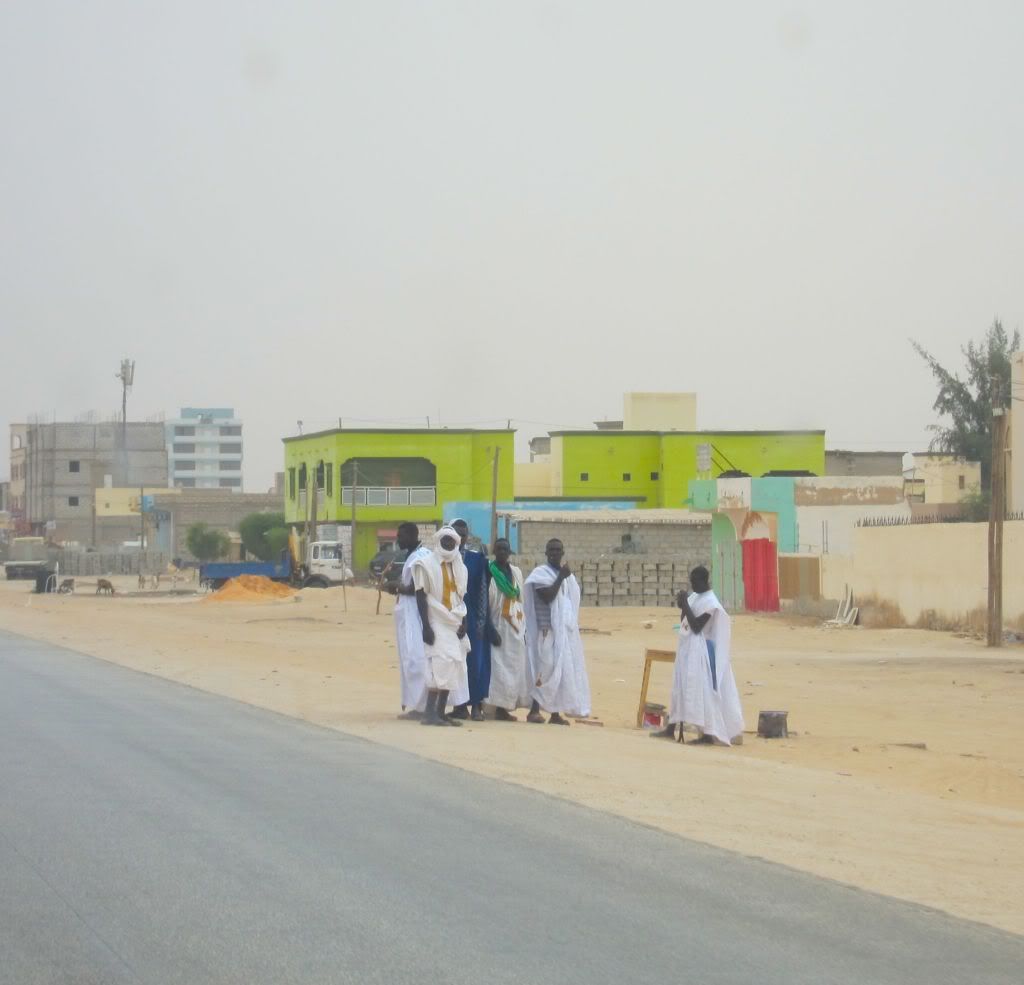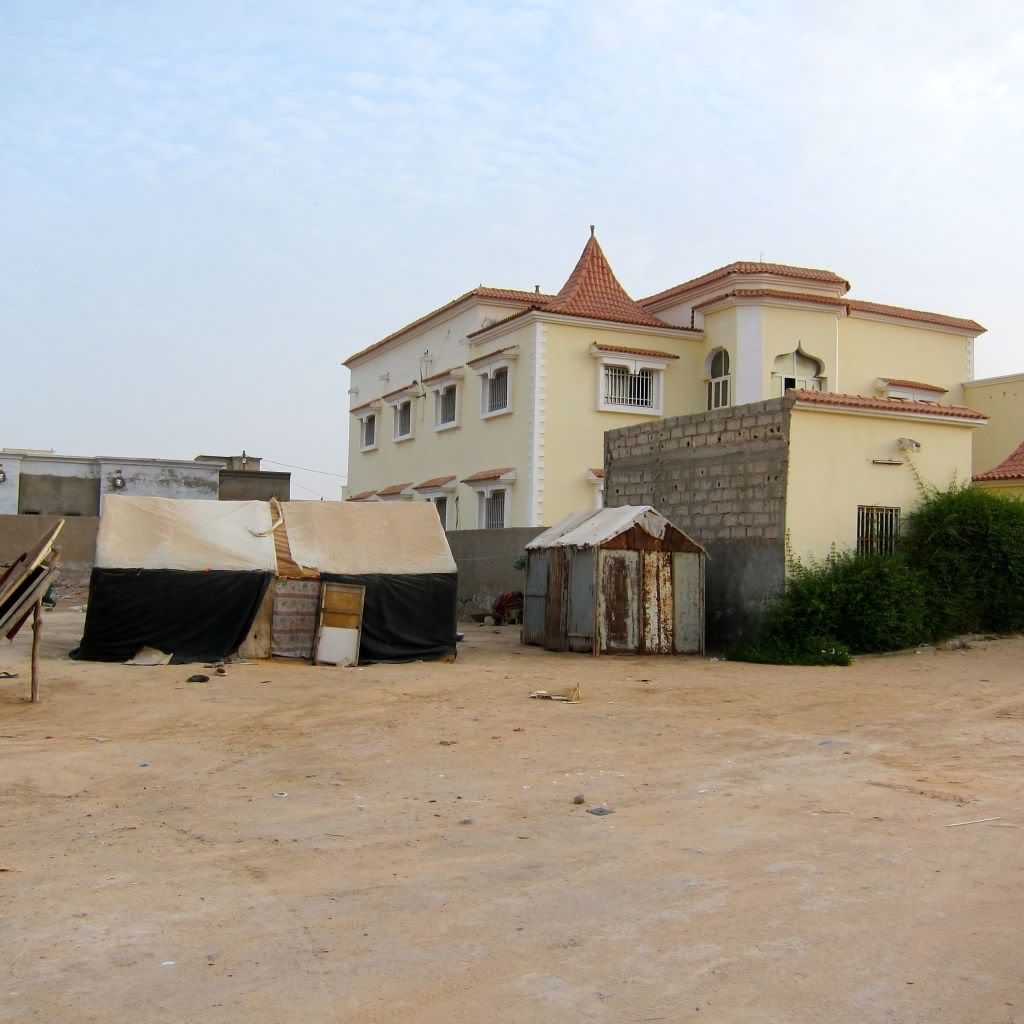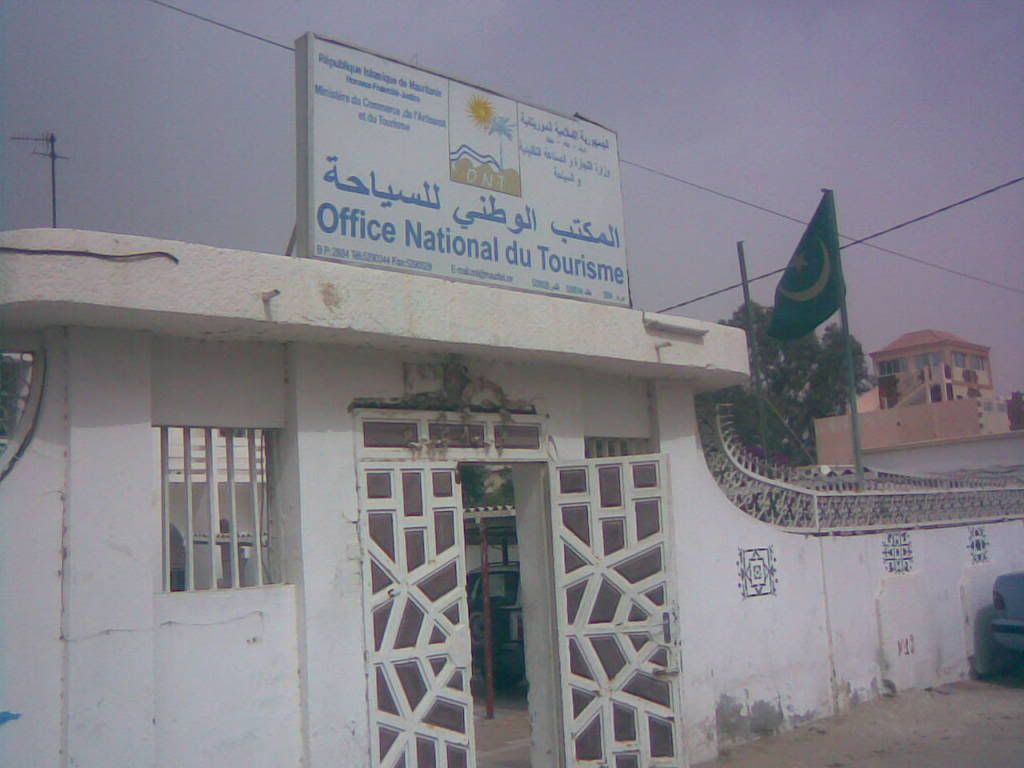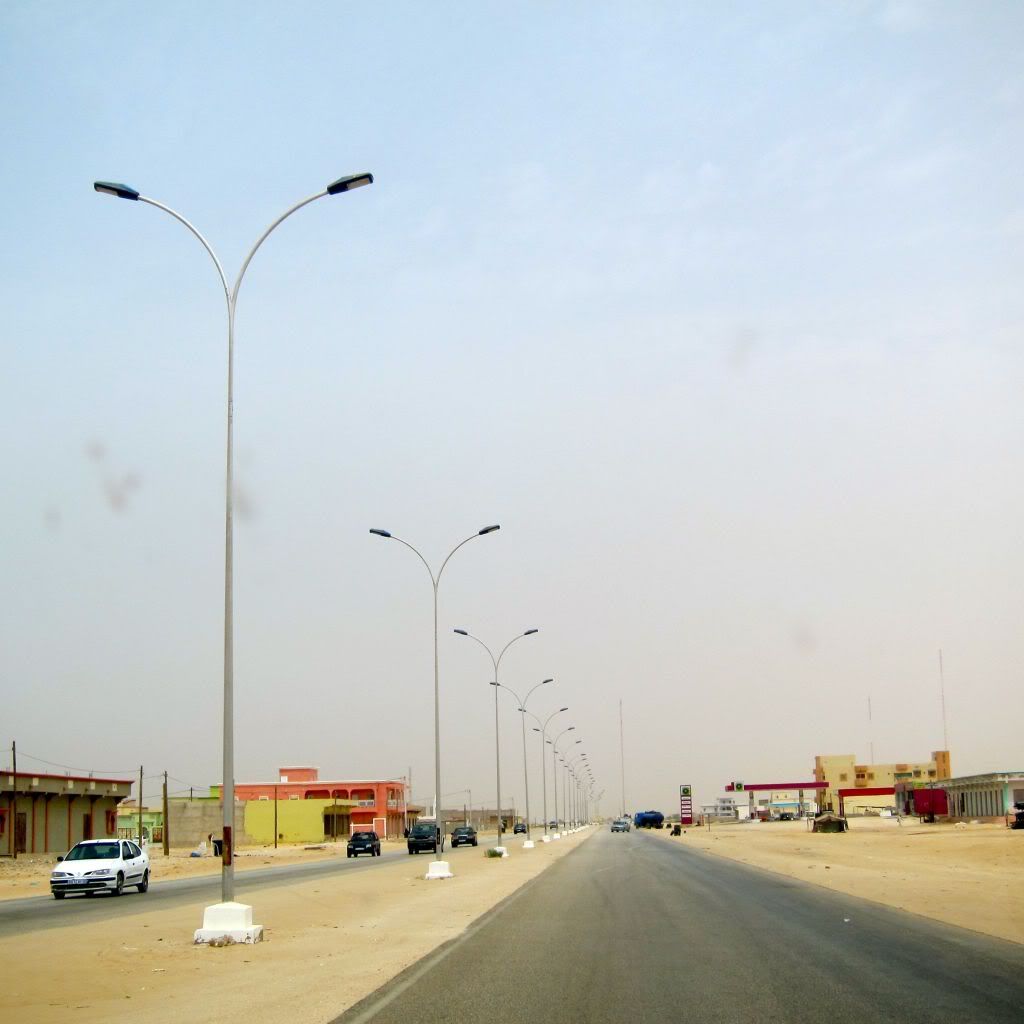
Did you know that slavery was abolished in Mauritania in 1981- and owning slaves was made a crime in 2007? Better late than never, right? Well….see this house, and see the tent next to said house? I am told that it’s a common sight; the tent holds “employees” of “neighboring” household. And now I highly encourage you to click here and check out this CNN’s just-published account on Slavery’s Last Stronghold. It’s well worth a few minutes of your precious web surfing time.
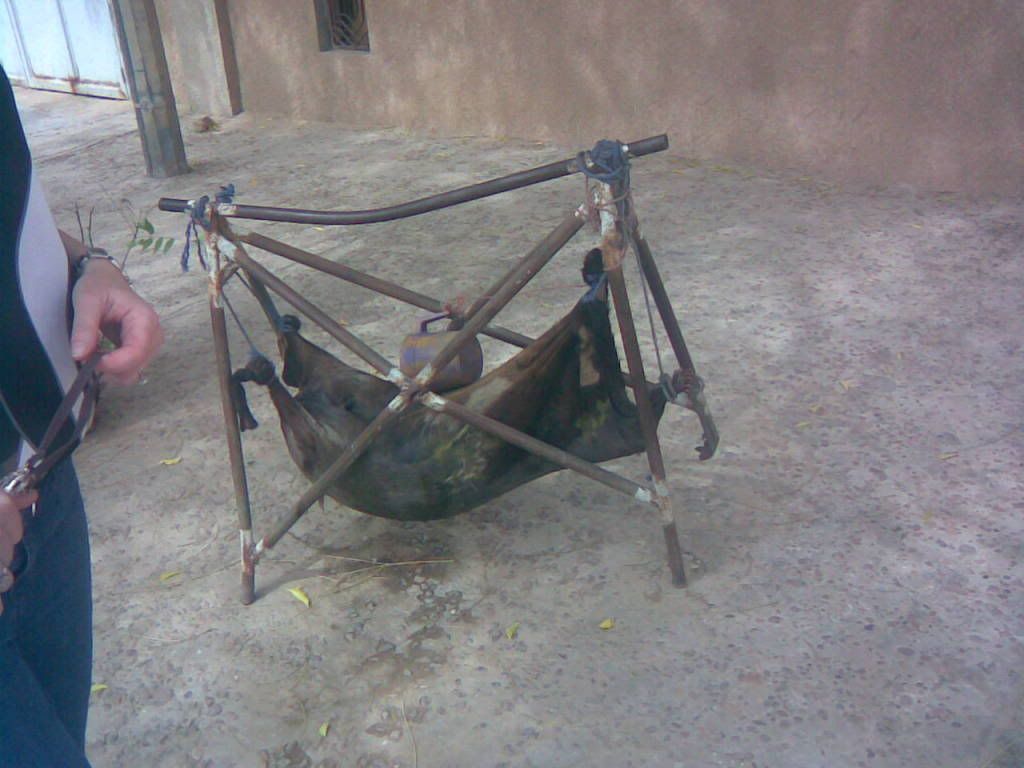
It wasn’t on Trip Advisor’s list, but we did wander the city center- just to see what was hanging around. We found this near the tourism office. Some sort of animal skin drying out.
Okay so we didn’t find too much in the way of garden spots in downtown. The climate here is simply not conducive to high noon outdoor strolls- which explains why this place looks so desolate in the daytime. We decided to do the most popular thing according to Trip Advisor- head for the ocean (me being a sailor, this is always a big draw).
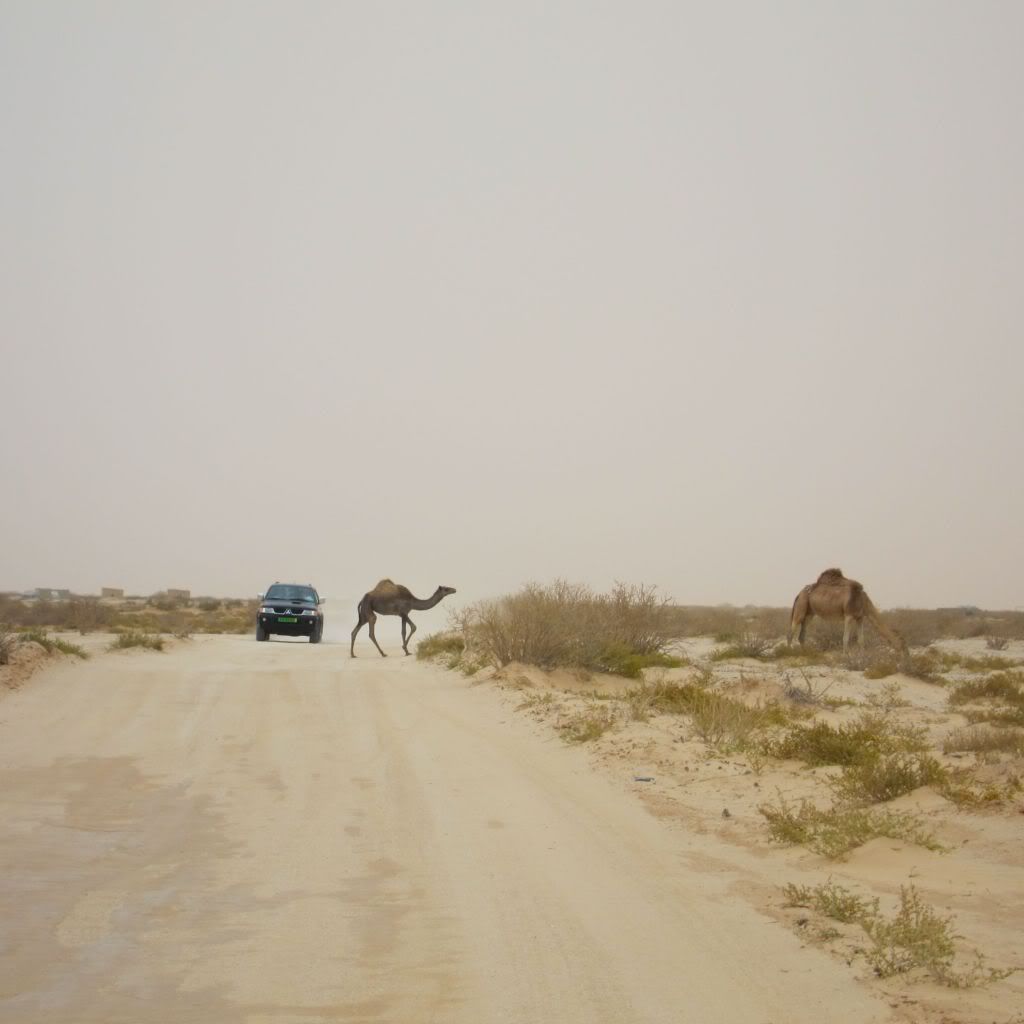
Cardinal directions are pretty much all you need when trying to get around this country: turn north to get to Nouakchott from Dakar. From Nouakchott, you drive west until you’ve hit the beach. Just watch out for the odd camel. Yes, even at the beach.
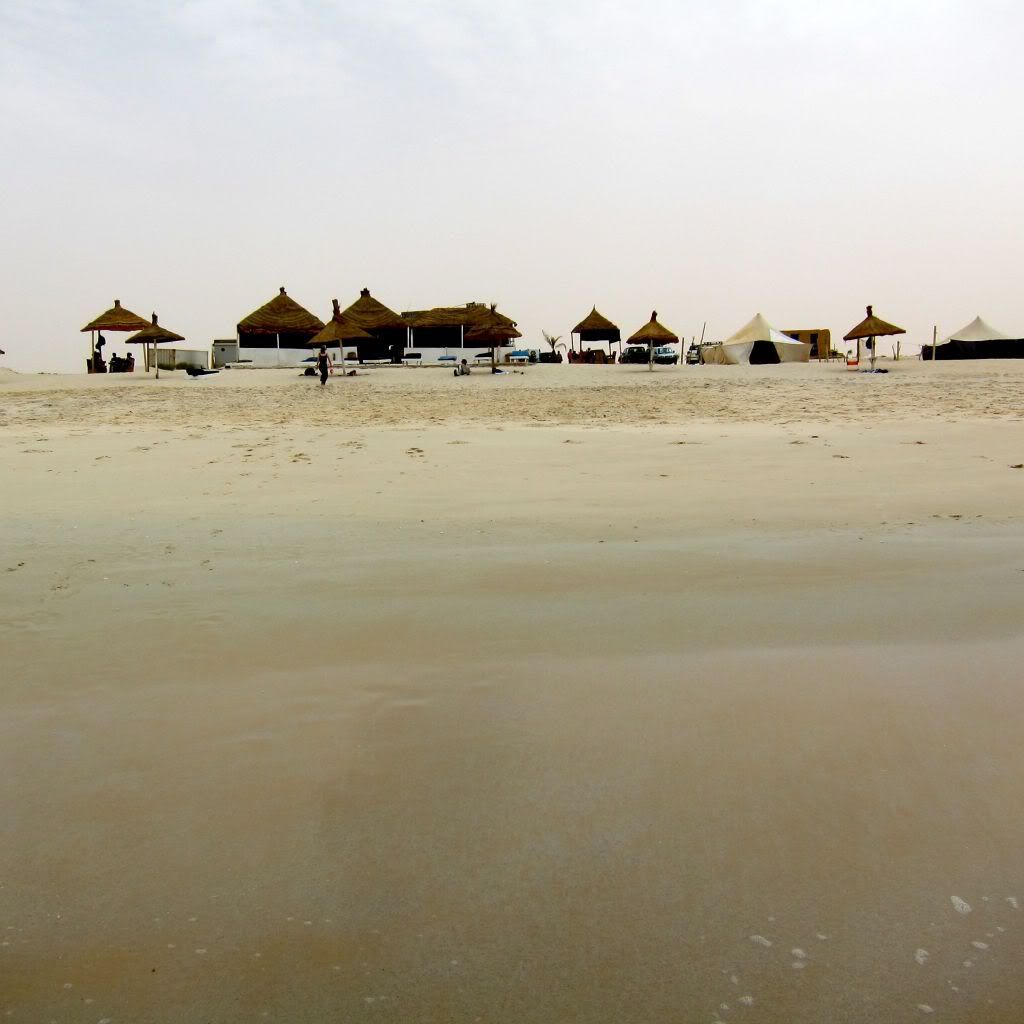
Nouakchott is such a small and sparsely populated capital city (less than a million people). Everywhere there are little clusters of activity that seem to pop where you’d expect that there to be nothing. This little beach area is one of the most popular places to go for people seeking leisure. You don’t see many Mauritanians going to the beach- according to the UN, the gross national income per capita is only about $900. My monthly credit card bill is often higher than that sum, and having offered up that confession, you can cue my moment of guilt.
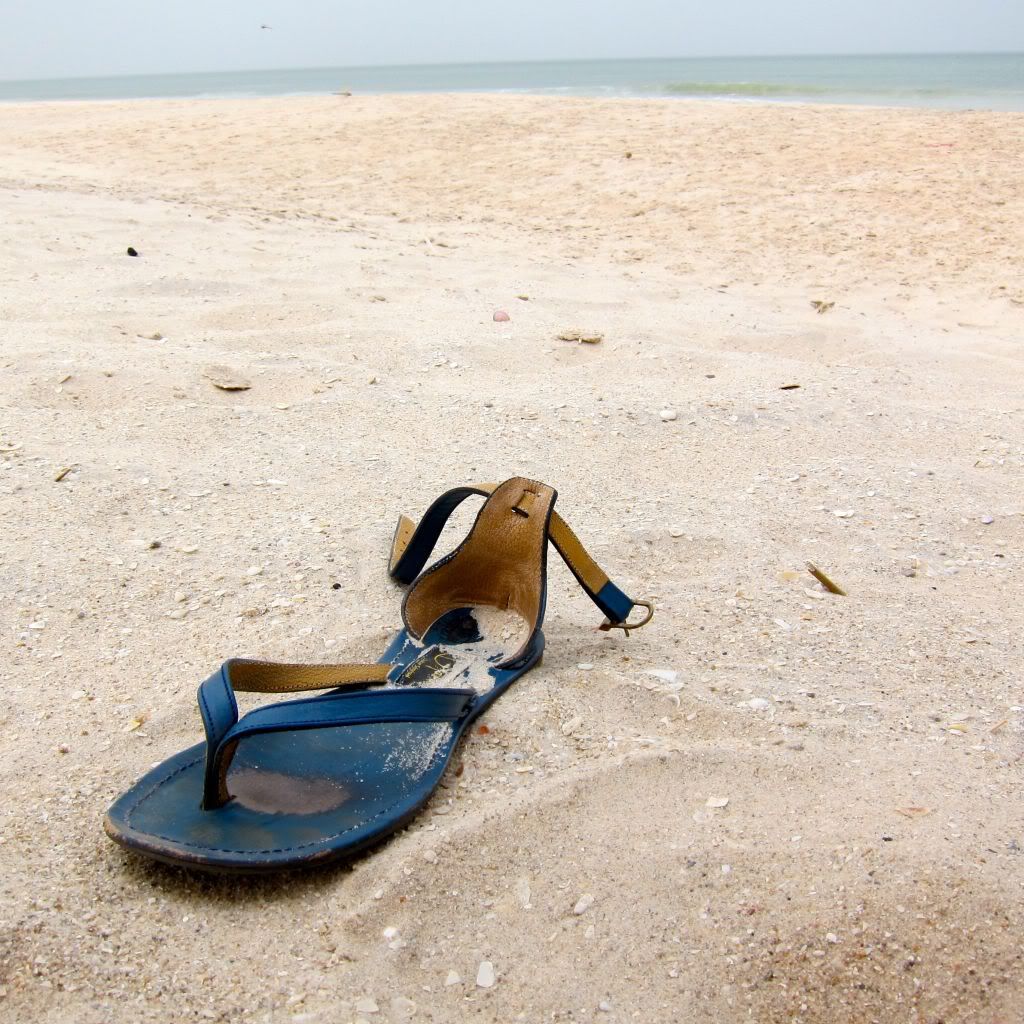
I was bread and spread in a land of four seasons that tips heavily with snow and verdure. With this in mind, I found it incredible to be driving across rolling hills of sand that could suddenly yield the expanse of the Atlantic ocean.

Ahh the beach. On Cape Cod, you won’t catch me hanging out at these places unless it’s the off-season for tourists. I’m not quite sure when the tourist season is in Nouakchott.

The water was cold, and the waves were forceful and full of sand. Kind of hypnotic to sit and watch.
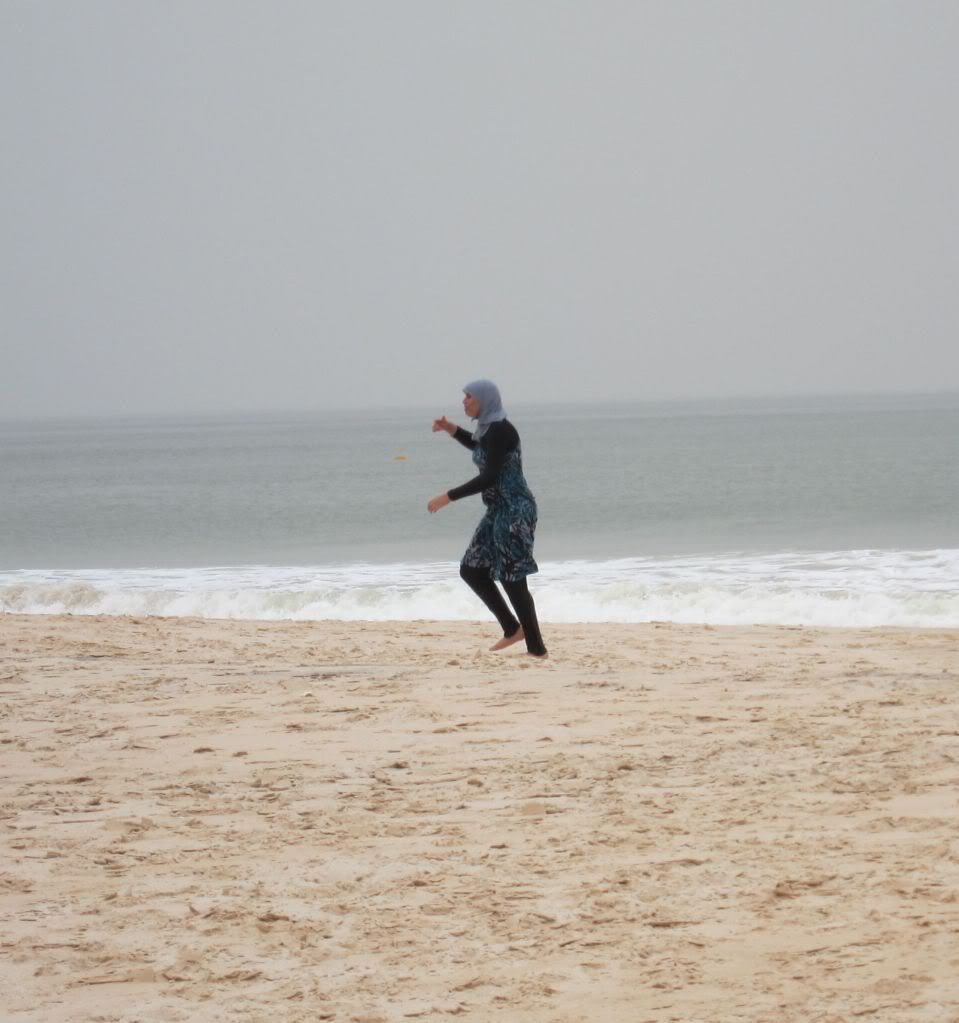
I don’t know if she was Mauritanian, but we saw everything from bikini-clad Westerners to fully covered women like this one playing in the waves. (Though I doubt this chick was local since corpulence is a sign of beauty for women in this country- click on this link to read about how women are force fed in order to appear more attractive).

It should come as no surprise to you that the seafood here is amazing. This was the meal served to me at the beach. It was outstanding.

But everyday Mauritanians don’t each much seafood. As a former French colony, you shouldn’t be surprised to hear that bread is the main show in town. As you can see here, the boulangerie can come to you if you want. If you’re Mauritanian and you have money, actual meat is the coveted protein source- camel, sheep, beef. It’s funny because as I type this, I reflect on the fact that I am pretty much vegetarian after deciding that meat isn’t good for me. It’s amazing to compare and contrast the conceptions of different cultures of the world.
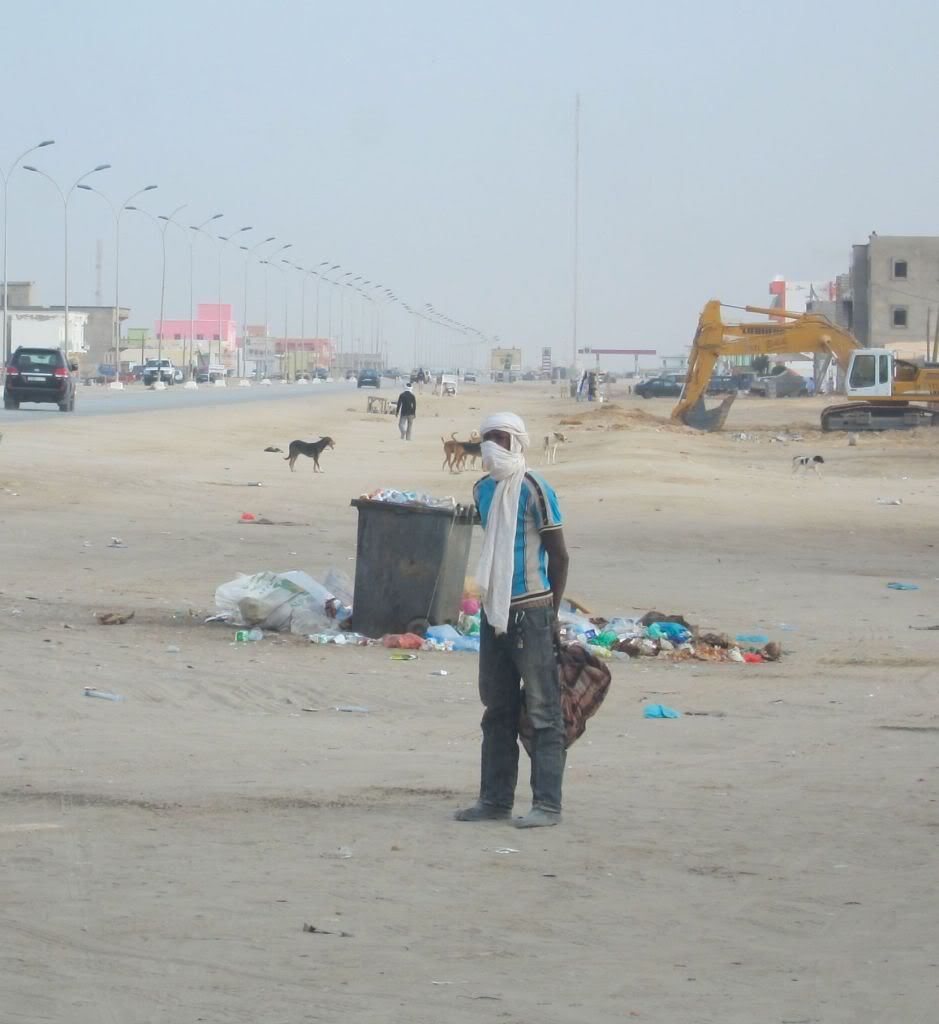
This guy is wearing a hawli, or a turban that protects men from the whipping wind and sand of the desert. In writing this blog entry, I kind of feel a bit like I told this story in a similar fashion: what I’m posting here is only the product of a few random trips around the city that largely shielded me from getting to know what life is like for an everyday person standing on the side of the road.
